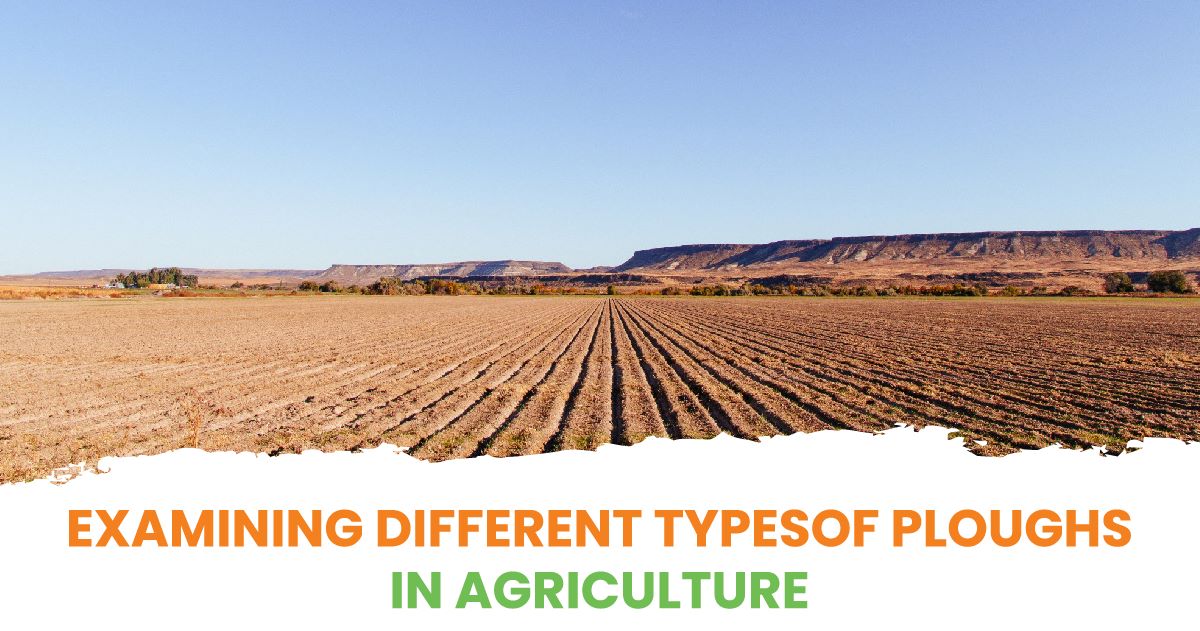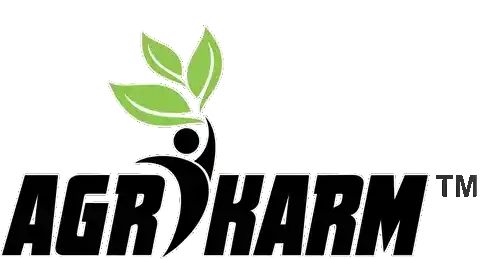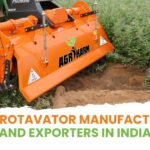
Ploughs are essential tools in agriculture, used to prepare the soil for planting by cutting, lifting, turning, and sometimes breaking up the soil. There are several types of ploughs, each designed for specific soil conditions, crops, and farming practices.
This blog highlights each type of plough in brief and outlines their advantages.
Hydraulic Plough
A hydraulic plough is a type of agricultural implement that uses hydraulic mechanisms to adjust the depth and angle of the plough blades. This adjustability allows for more precise control when preparing the soil for planting, making it easier to work in varying soil conditions and terrains.
Key Components
- Hydraulic Cylinder: Powers the raising, lowering, and tilting of the plough using hydraulic fluid pressure.
- Mouldboard: Turns over the soil, making it ready for planting.
- Ploughshare: The cutting edge that slices into the soil.
- Frame: Supports the entire structure, including the hydraulic system.
- Control Valve: Regulates the hydraulic fluid to control movement of the plough.
- Depth Control Mechanism: Ensures uniform ploughing depth.
Advantages
- Easier to operate, reducing the physical effort needed by the farmer.
- Accurate depth and angle adjustments through the hydraulic system.
- Faster setup and adjustments compared to manual systems.
- Hydraulics allow for lifting and positioning, reducing soil disturbance.
- Can adapt to different soil types and field conditions.
Disadvantages
- Hydraulic systems require regular upkeep to prevent leaks and wear.
- Requires a tractor with compatible hydraulic output.
- More sophisticated, leading to potential issues if not operated correctly.
Mouldboard Plough
A mouldboard plough is a traditional farming implement used to turn over the soil in preparation for planting. It has been a crucial tool in agriculture for centuries, with its design evolving to become more efficient and effective.
Key Components:
- Mouldboard: The curved metal plate that turns over the soil. It cuts and inverts the top layer of soil, burying weeds and crop residues and bringing fresh nutrients to the surface.
- Ploughshare: The cutting edge at the bottom of the mouldboard, which slices through the soil.
- Frog: The part of the plough that holds the mouldboard, ploughshare, and other components together.
- Landside: The flat part that stabilizes the plough and resists the side pressure caused by the turning soil.
- Beam: The long bar that attaches the plough to the draft animal or tractor.
Advantages:
- Improves soil fertility by bringing nutrients to the surface.
- Helps in better water infiltration and root penetration.
- Can break up hardpan and compacted layers of soil.
Disadvantages:
- Can cause soil erosion if used improperly.
- May require significant draft power, especially in heavy soils.
- Can disturb the soil structure and microbial activity.
Disc Plough
A disc plough is a type of agricultural implement used for primary tillage in farming. It is designed to break up and turn over the soil, preparing it for planting. It cuts through soil and vegetation more efficiently, especially in hard or rocky conditions.
Key Components
- Concave Discs: The discs are typically made of hardened steel and are concave, which helps in cutting and turning the soil.
- Adjustable Angles: The angle of the discs can usually be adjusted to control the depth and aggressiveness of the ploughing.
- Multiple Discs: Most disc ploughs have multiple discs, usually ranging from 2 to 5 or more, depending on the size and power of the tractor or the specific agricultural needs.
- Heavy-Duty Frame: The frame of the disc plough is built to withstand tough conditions and the stress of cutting through heavy soils.
Advantages
- Works well in hard, dry, stony, or sticky soils.
- Handles heavy residue without clogging, making it suitable for areas with a lot of plant material.
- Can penetrate deeper into the soil, helping break up compacted layers.
- Works on rough, uneven, and rocky terrain.
- Less likely to create furrows, reducing soil erosion in some conditions.
Disadvantages
- Requires more tractor power, increasing fuel consumption.
- May not maintain consistent depth across the field.
- Heavier than mouldboard ploughs, which may cause soil compaction in certain conditions.
Chisel Plough
A chisel plough is a type of agricultural implement used primarily for deep tillage, which helps to break up and aerate the soil without turning it over. This process preserves the soil structure and minimizes the disturbance to the soil profile, making it ideal for conservation tillage practices.
Key Components
- Tines or Shanks: The chisel plough has several tines or shanks that penetrate the soil. These tines are strong and durable, capable of reaching depths of up to 12 to 18 inches (30 to 45 cm), depending on the model and settings.
- Frame: The frame of the chisel plough is robust to withstand the stress of deep tillage. It may be mounted or trailed behind a tractor.
- Wide Coverage: Chisel ploughs are often designed to cover a wide area, making them efficient for large fields.
- Adjustable Depth: The depth of the tines can be adjusted to suit different soil conditions and tillage needs.
Advantages
- Breaks up compacted soil layers, improving soil aeration and water infiltration.
- Leaves crop residues on the surface, minimizing erosion compared to mouldboard ploughs.
- Preserves organic matter and soil structure by minimizing soil disturbance.
- Allows deeper root penetration, promoting better crop growth.
- Requires fewer passes over the field, leading to fuel savings.
Disadvantages
- Requires a powerful tractor due to the depth and resistance of the soil.
- Does not completely turn over the soil, so it may not eliminate weeds effectively.
- May struggle to work efficiently in wet or overly compacted soil.
Subsoiler Plough
A subsoiler plough is a deep tillage implement used in agriculture to break up and loosen soil layers below the normal working depth of surface plows, such as moldboard or disc plows. This type of plough is designed to penetrate deep into the soil, typically to a depth of 30 to 60 centimeters (12 to 24 inches), which is deeper than conventional plowing.
Key Components
- Deep Tillage: Breaks up compacted soil layers or hardpan, improving water infiltration, root growth, and soil aeration.
- Single or Multiple Tines: It usually has one or more sturdy, narrow tines (blades) that penetrate the soil vertically.
- Minimal Surface Disturbance: Unlike traditional plowing, a subsoiler causes minimal disruption to the surface soil, leaving the top layer largely intact.
- Heavy-Duty Construction: Due to the deep penetration, subsoilers are built with strong, durable materials to withstand the stress of working in tough soil conditions.
Advantages
- Helps retain moisture by breaking up hardpan layers, leading to better water conservation.
- By loosening soil, it reduces surface runoff and erosion.
- Creates better growing conditions for plants by improving soil health and root growth.
- Improves soil structure and aeration, promoting healthier crops.
Disadvantages
- Requires powerful tractors to operate, leading to higher fuel consumption.
- May cause disturbance to soil organisms and natural soil structure if not used properly.
- Less effective in extremely rocky or sandy soils.
Rotary Plough
A rotary plough, also known as a rotary tiller or rotary hoe, is an agricultural implement used for soil preparation. It is designed to till the soil by breaking it up into smaller pieces, which improves soil aeration and makes it easier for seeds to germinate.
Key Components
- Blades: The rotary plough has rotating blades (tines) that cut into the soil, churning it as the machine moves forward. The blades are usually attached to a rotating drum or rotor.
- Power Source: It is typically powered by a tractor’s power take-off (PTO) or by a dedicated engine in the case of standalone models.
- Depth Control: The depth of tillage can usually be adjusted, allowing the user to control how deep the blades penetrate the soil.
- Width: The width of the rotary plough can vary, with larger models covering more ground in one pass, making them suitable for larger fields.
Advantages
- It effectively breaks up and turns the soil, making it suitable for planting.
- Performs multiple functions (cutting, turning, leveling) in one pass, reducing the need for additional tools.
- The rotary action mixes and aerates the soil better, improving moisture retention and root growth.
- Can be used in various types of soils, including compact and hard soils.
- Helps in weed control by cutting and burying them during tillage.
Disadvantages
- Intensive tillage can lead to soil erosion, particularly on slopes.
- Overuse may disrupt natural soil structure and lead to compaction over time.
- May not be suitable for deeper tillage operations, especially in very hard soils.
Ridging Plough
A ridging plough, also known as a ridger, is a type of agricultural implement designed for creating ridges or raised rows of soil. These ridges are commonly used in the cultivation of crops like potatoes, sugarcane, and other root vegetables that benefit from being planted in mounds or elevated soil.
Key Components
- Mouldboards/Discs: The multiple discs arranged lift and turn the soil, creating a ridge.
- Adjustable Width: The distance between the mouldboards or discs can often be adjusted to suit different row spacings.
- Multiple Furrows: Some ridging ploughs can create multiple ridges in one pass, improving efficiency.
- Compatibility: Ridging ploughs can be attached to tractors and are compatible with various soil types.
Advantages
- Creates raised ridges that allow water to drain more effectively between rows.
- Ridging process aerates the soil, promoting better root development and improving the health of crops.
- Allows for earlier planting and better growth in cooler climates.
- Helps in controlling weeds which reduces competition for nutrients and space with the main crop.
Disadvantages
- Heavy clay soils can be difficult to ridge properly, as they may not break up easily and can compact, limiting the benefits of the process.
- Poorly formed ridges can hinder water distribution and cause uneven growth of crops, requiring precise operation of the ridger.
- Ridging is mainly beneficial for certain crops like potatoes, sugar beets, and tuber crops while may not offer significant advantage for other types of crops.
Visit our website for more information about varied types of plough in agriculture.


 Admin
Admin 

